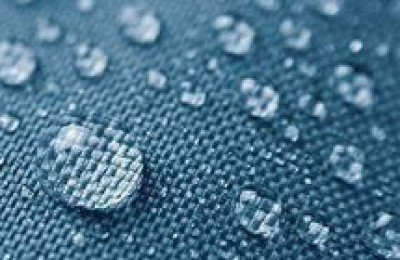Recently, topics such as “H&M boycotting Xinjiang products” have continued to ferment on Weibo. “This is just a small episode and has limited impact on Xinjiang cotton.” The person in charge of a listed cotton spinning processing company in Xinjiang said. Companies upstream and downstream of the cotton industry chain have spoken out to support Xinjiang cotton. Many well-known casual and sportswear products have specifically stated that Xinjiang cotton is used in their products.
It is understood that Xinjiang cotton farmers’ intention to plant cotton this year has changed from a decrease of 0.85% in the previous period to an increase of 1.49% year-on-year; Xinjiang’s cotton production is expected to remain stable this year.
The cotton industry is related to the overall national economy
Cotton is my country’s main cash crop and raw material for the textile industry , important strategic materials. Experts from the National Cotton Industry Alliance (CCIA, hereinafter referred to as the “China Cotton Alliance”) said that in 2020, my country’s raw cotton consumption was 7.99 million tons and imported cotton was 2.1586 million tons. From seeds, planting, processing, and circulation to textiles, clothing, trade, etc., the entire cotton industry chain involves tens of millions of industrial workers, cotton farmers and other employees, with an annual output value of approximately 6 trillion yuan.
The cotton industry is related to the overall national economy, and Xinjiang cotton plays an even more important role in my country’s cotton industry. Data show that in 2020, my country’s cotton field area was 47.548 million acres, of which 37.528 million acres were in Xinjiang, accounting for 78.9% of the country’s planting area; my country’s cotton output was 5.910 million tons, accounting for 23.8% of the world, of which Xinjiang was 5.161 million tons, accounting for 87.5% of the country’s total. , 20.8% of the world.
From 5,000 tons in the early days of the founding of New China to more than 5 million tons today, behind the thousands-fold increase in Xinjiang’s annual cotton output are the happy smiling faces of countless cotton farmers and the hard work of countless scientific researchers. At the same time, it also benefits from the unique advantages of Xinjiang cotton in terms of quality, cost and policies.
Xinjiang’s climate and land resource conditions are suitable for cotton growth, and large-area planting is conducive to mechanized production and picking. According to data from the National Bureau of Statistics, Xinjiang’s cotton yield per unit area in 2020 was 137.5 kg/mu, 10.6% higher than the national average yield. Experts from the China Cotton Alliance said that Xinjiang’s total cotton output, unit yield, planting area, and commodity allocation volume have ranked first in the country for 26 consecutive years. The pattern of “the world’s cotton looks to China, and China’s cotton to Xinjiang” has been formed.
“The 44 production standards mentioned by BCI are actually very low. For example, no 66 powder and dichlorvos are used. Xinjiang’s cotton production has already met the standards 30 years ago.” President of the Cotton Farmers Branch of the China Cotton Association Cao Huiqing said that cotton companies in Xinjiang have long joined the Stockholm Convention, and their production standards are actually much higher than BCI.
The fundamentals of the cotton market are improving in the long term
As of March 25, China’s cotton price index (CCIndex3128B) was 15,547 yuan / ton, a decrease of 1,011 yuan/ton from the end of last month. The closing price of CF2105 contract was 14,890 yuan/ton, a decrease of 1,350 yuan/ton from the end of last month.
△Trends of lint cotton in East China since February
The rise in cotton prices last year was partly due to the increase in textile export orders, mainly due to the market are the decisive factors, one is the adjustment of supply and demand structure, and the other is the continued recovery of demand. Therefore, judging from the current situation, the impact is very limited.
According to the analysis of Zhuochuang Information, cotton spinning companies are currently scheduling orders for cotton yarn until April, and some companies are scheduling orders until May. Most of these orders are received around the Spring Festival. With Zheng Mian’s rush The high price fell, and there was insufficient follow-up on follow-up orders. Some companies with sufficient orders raised prices and waited, waiting for Zheng cotton to stop falling and stabilize.
As for the future trend of cotton prices, institutions expect that cotton futures prices will return to fundamentals in the later period. The current fundamentals of the cotton market are still in a long-term improvement stage, focusing on the follow-up of subsequent orders and New flower planting news for April.
Xinjiang’s cotton production is expected to remain stable this year
Xinjiang’s long-staple cotton, the world’s top, is used for clothing Quilt, warm, breathable and comfortable. It is understood that as the world’s largest cotton consumer and second largest cotton producer, my country’s cotton output from 2020 to 2021 will be approximately 5.95 million tons, with a total demand of approximately 7.8 million tons, and an annual gap of approximately 1.85 million tons. Among them, Xinjiang’s cotton output reached 5.161 million tons, an increase of 3% from last year, accounting for 87.3% of the country’s total cotton output. Accounting for approximately 67% of domestic consumption. As of the end of the 2020 cotton production season, Xinjiang’s total cotton output, unit yield, planting area, and commodity allocation volume have ranked first in the country for 26 consecutive years.
In February 2021, the China Cotton Association conducted the second survey on cotton planting intentions in 2021. The survey results showed that Xinjiang cotton farmers’ cotton planting intentions this year dropped by 0.85% year-on-year from the previous period. It turned into an increase of 1.49%.
“As of now, there are about 4,800 cotton picking machines in Xinjiang. The number of cotton picking machines owned by Bo Shiran alone has reached 1,190, with an average of 1,190 cotton picking machines per year. With an area of 8,000 acres, about 32 million acres in Xinjiang have been harvested mechanically, accounting for more than 70% of the total cotton planting area. Only a few are harvested manually.” Huang Xincheng, financial director of Xinjiang Bo Shiran Intelligent Agricultural Machinery Co., Ltd. introduced .
“Industry insiders generally believe that Xinjiang cotton production is expected to remain stable this year. Xinjiang cotton planting will have the following two characteristics. First, mechanized production will be further popularized; second, cotton quality will improve. Improvement. At present, cotton planting land in Xinjiang is being transferred from scattered farmers to large cooperatives, groups, etc., which not only increases the income of cotton farmers, but also improves the consistency of cotton, cotton seed selection, planting management, harvesting and sales, etc.links are more standardized. “Zhan Jingli told reporters.
It is understood that as of March 21, Xinjiang’s lint cotton processing volume was 5.7457 million tons, a new high in recent years.
Companies upstream and downstream of the industrial chain support Xinjiang cotton
On the 25th, Xinjiang involving cotton seeds and planting business Listed company – New Agricultural Development Limited. “We firmly oppose Xinjiang-related remarks from Western countries, and also regret that some commercial institutions have alienated commercial competition into a political topic; cotton is an important strategic material, and Xinjiang is the most important cotton producing area in China. The stability of the region is of great significance. “A person in charge of New Agricultural Development said that he is firmly optimistic about the long-term development of the domestic cotton industry and firmly believes that my country’s cotton industry will go global.
As the downstream of the cotton industry chain, the textile industry Clothing companies have also spoken out to support Xinjiang cotton. According to incomplete statistics, as of the afternoon of the 25th, more than 10 domestic textile brands have spoken out to support Xinjiang cotton, including Anta, Hongxing Erke, Heilan Home, Metersbonwe , Semir, etc.
Xinjiang cotton is in short supply all year round
“Xinjiang cotton can generally be cleared before the Spring Festival. library. “Cao Huiqing said that Xinjiang cotton has an excellent reputation among cotton textile companies across the country, with outstanding performance in color, strength, length, micronaire and other indicators. Generally, textile factories use more than 65% of Xinjiang cotton, and then mix it with other cotton Or imported cotton blends. There is no shortage of orders for Xinjiang cotton, and whether there is BCI certification or not, it will not cause a backlog of Xinjiang cotton.
China is the world’s second largest cotton producer and the largest cotton consumer. Domestic cotton Xinjiang cotton, in particular, is in short supply all year round. The China National Textile and Apparel Federation stated that Xinjiang cotton is a high-quality natural fiber raw material recognized by the global industry. It better meets the rigid consumer demand for cotton textiles and clothing around the world and is a promising choice for the Chinese textile industry. An important raw material guarantee for sustainable development.
Liu Qiuhua, general manager of the apparel product center of 361 Degrees (China) Co., Ltd., told reporters that 361 Degrees uses a large amount of cotton yarn in T-shirts and sweatshirts and sweatpants. According to preliminary statistics, every year More than 7,500 tons of cotton yarn raw materials are used. “We are very concerned about the source link. The production capacity and quality of cotton have a lot to do with our products. “Liu Qiuhua said that all the cotton used by 361 Degrees is domestic cotton, 90% of which is Xinjiang cotton.
Qu Jing, vice president of Huimei Fashion Group, said that the fabrics used by the group’s Inman cotton and linen clothing brand 70% of the cotton used is domestically produced cotton, 80% of which is Xinjiang cotton. Souyute Group Co., Ltd. said that the company’s clothing and supply chain business mainly uses domestic cotton. Vosges Group Co., Ltd. said that the company’s main raw material is cotton, of which domestic cotton is used. The average annual cotton consumption is more than 20,000 tons.
Innovative technology creates a high-quality national cotton brand
Regarding various international standards, people are asking, why can’t we establish an industrial alliance so that we can grow what kind of cotton the textile mills need? In 2016, led by the Cotton Research Institute of the Chinese Academy of Agricultural Sciences, we united China’s entire cotton industry Chaining 208 enterprises and institutions, the National Cotton Alliance has been established for integrated cooperation in the entire cotton industry chain.
In just over 4 years since its establishment, the National Cotton Alliance has made great achievements in scientific and technological collaborative innovation and achievement promotion, and high-quality cotton production. A lot of work has been done in the construction of bases and supply chains, the establishment of full-process product quality control standards and traceability systems, the cultivation and promotion of the national cotton “CCIA” brand, and the construction of a deep integration mechanism for cotton’s “three industries” and has achieved fruitful results.
Zhang Mingqing, Secretary of the Party Working Committee of Changji National Agricultural Science and Technology Park in Xinjiang and Executive Vice Chairman of the China Cotton Alliance, said that the high-quality medium-long staple cotton demonstration strain “Zhongmian 641” introduced by the park from the China Cotton Alliance was trial grown in the Changji area. The inspection results show that the fiber length and strength of “China Cotton 641” raw cotton are close to 32, which is 4 grades higher than the main quality of Xinjiang cotton and comprehensively exceeds Australian cotton standards.
“Luolai signed a strategic cooperation agreement with China Cotton Institute last year , with the support of China Cotton Research Institute, the next step will be to rent tens of thousands of acres of cotton fields in Xinjiang to provide high-quality cotton for brands. ” Gu Yishi, engineer of Luolai Home Textile Co., Ltd., introduced.
The person in charge of the China Cotton Alliance told reporters that in the future, the alliance will use the creation of the China Cotton “CCIA” brand as a breakthrough point, running through the entire cotton industry chain, and establishing a national cotton “CCIA” brand. The traceability system from seeds to CCIA clothing promotes China’s transformation from a major cotton planting and textile country to a strong cotton planting and textile country.
Sold 2352 in 1 hour Ten thousand yuan, Xinjiang cotton products have exploded in sales!
According to reports, a recent live broadcast of Xinjiang cotton products attracted as many as 12 million viewers, and it only lasted one hour. Within a few days, consumers placed orders for Xinjiang cotton products worth a total of 23.52 million yuan.
It can be said that the current upsurge of Chinese consumers’ support for Xinjiang cotton is constantly emerging. Netizens have Commented, “Xinjiang cotton products are unavailable and sold out as soon as they are put on the shelves! Some netizens commented, “I grabbed a bath towel made of Xinjiang cotton. This can be considered as supporting Xinjiang cotton!” ”
Relevant data shows that in the special live broadcast on the night of March 26, 79,900 pieces of the most popular Xinjiang cotton products were sold, with sales reaching 6.31 million yuan.
According to a CCTV News report on March 27, the weather in Xinjiang has become warmer recently, and various regions are seizing the favorable opportunity to carry out spring sowing of cotton, striving to lay a good foundation for a bumper cotton harvest this year. In In Wujiaqu City, Xinjiang, 1.89 million acres of cotton have entered the sowing period, which will greatly meet the demand for cotton from buyers at home and abroad.
� Seize the favorable opportunity to carry out spring sowing of cotton and strive to lay a good foundation for a bumper cotton harvest this year. In Wujiaqu City, Xinjiang, 1.89 million acres of cotton have entered the sowing period, which will greatly meet the demand for cotton from buyers at home and abroad.
</p







